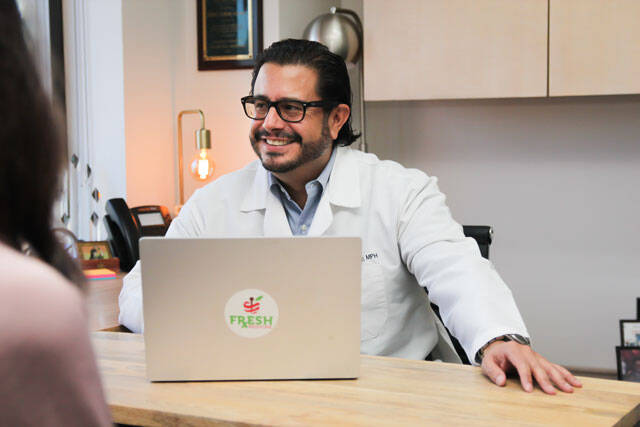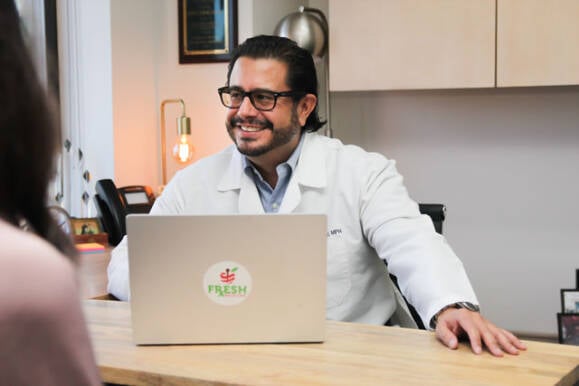THE ROLE OF TECHNOLOGY ON FOOD
Robert Graham Xiao-Er Kong
There is no bigger industry on our planet than food and agriculture. The World Bank estimates that food and agriculture comprise about 10% of the global GDP. Food and agriculture would be valued at about $8 trillion globally based on the projected global GDP of $88 trillion for 2019.

Diane Hatz, Changefood.org
EXPERT OPINION


In the Grist article, “When it comes to food, technology won’t save us,” author Tom Laskawy reminds us that technology alone will not feed the world. Many of us in the “good food movement” believe that investing in people who feed people will lead to a food system that is profitable, but can also improve the health of people and the planet. Let’s invest in people, people.
The entire food retail space at $5.32 trillion (including grocery, convenience stores, drug stores, foodservice facilities). According to Research and Markets, the global food tech market is expected to exceed $250 billion by 2022. Some argue, the food tech space is still small in comparison. Regardless, how much of the pie is trickling down to the actual people at the front lines or on the ground?
Technology will continue to play an increasingly critical role in how the food we eat is made, produced, packaged, delivered, how it tastes, feels and smells, and how it is reused and repurposed. Investments in food tech will continue to increase to help deliver on the promise of healthier, more sustainable food systems for the world. After all, we are what we eat.
“Technology is not the answer; technology is a means to get us to the answer. People are the answer!”
On the food front, a record $1.71 trillion was spent on food and beverages in 2018 at grocery stores and other retailers and away-from-home meals and snacks in the United States alone. During the same year, roughly 10% of Americans’ disposable personal income was spent on food, 5% at home and 4.7% away from home.
“However, despite a stalwart customer base, the food industry is facing unprecedented challenges in production, demand and regulations stemming from consumer trends. Consumer demands and focus have changed in recent years. An increasing focus by consumers on sustainability, health and freshness has placed significant pressure on the food industry to innovate.”
– Tech Crunch 2019
That’s where technology can help: I love Seamless, Uber eats for their convenience; I love technology that offers us safe food; I love technology that offers farmers the ability to understand and predict droughts; I love technology like smart kitchens.
Yet, what I don’t love is how the food technology world has focused more on the technology and less on the people who grow, cook and deliver the food. Don’t get me wrong, optimizing agricultural production, processing, distribution as well as retail are vital for an ever-growing food demand. But, we must not forget the people, our farmers, laborers, cooks/chefs and restaurateurs. Diane Hatz, of Changefood.org, reminds us “technology is not the answer; technology is a means to get us to the answer. People are the answer!”


3 min




Robert Graham Xiao-Er Kong

Diane Hatz, Changefood.org
In the Grist article, “When it comes to food, technology won’t save us,” author Tom Laskawy reminds us that technology alone will not feed the world. Many of us in the “good food movement” believe that investing in people who feed people will lead to a food system that is profitable, but can also improve the health of people and the planet. Let’s invest in people, people.

The entire food retail space at $5.32 trillion (including grocery, convenience stores, drug stores, foodservice facilities). According to Research and Markets, the global food tech market is expected to exceed $250 billion by 2022. Some argue, the food tech space is still small in comparison. Regardless, how much of the pie is trickling down to the actual people at the front lines or on the ground?
Technology will continue to play an increasingly critical role in how the food we eat is made, produced, packaged, delivered, how it tastes, feels and smells, and how it is reused and repurposed. Investments in food tech will continue to increase to help deliver on the promise of healthier, more sustainable food systems for the world. After all, we are what we eat.
“Technology is not the answer; technology is a means to get us to the answer. People are the answer!”

There is no bigger industry on our planet than food and agriculture. The World Bank estimates that food and agriculture comprise about 10% of the global GDP. Food and agriculture would be valued at about $8 trillion globally based on the projected global GDP of $88 trillion for 2019.



On the food front, a record $1.71 trillion was spent on food and beverages in 2018 at grocery stores and other retailers and away-from-home meals and snacks in the United States alone. During the same year, roughly 10% of Americans’ disposable personal income was spent on food, 5% at home and 4.7% away from home.
“However, despite a stalwart customer base, the food industry is facing unprecedented challenges in production, demand and regulations stemming from consumer trends. Consumer demands and focus have changed in recent years. An increasing focus by consumers on sustainability, health and freshness has placed significant pressure on the food industry to innovate.”
– Tech Crunch 2019
That’s where technology can help: I love Seamless, Uber eats for their convenience; I love technology that offers us safe food; I love technology that offers farmers the ability to understand and predict droughts; I love technology like smart kitchens.
Yet, what I don’t love is how the food technology world has focused more on the technology and less on the people who grow, cook and deliver the food. Don’t get me wrong, optimizing agricultural production, processing, distribution as well as retail are vital for an ever-growing food demand. But, we must not forget the people, our farmers, laborers, cooks/chefs and restaurateurs. Diane Hatz, of Changefood.org, reminds us “technology is not the answer; technology is a means to get us to the answer. People are the answer!”


3 min










